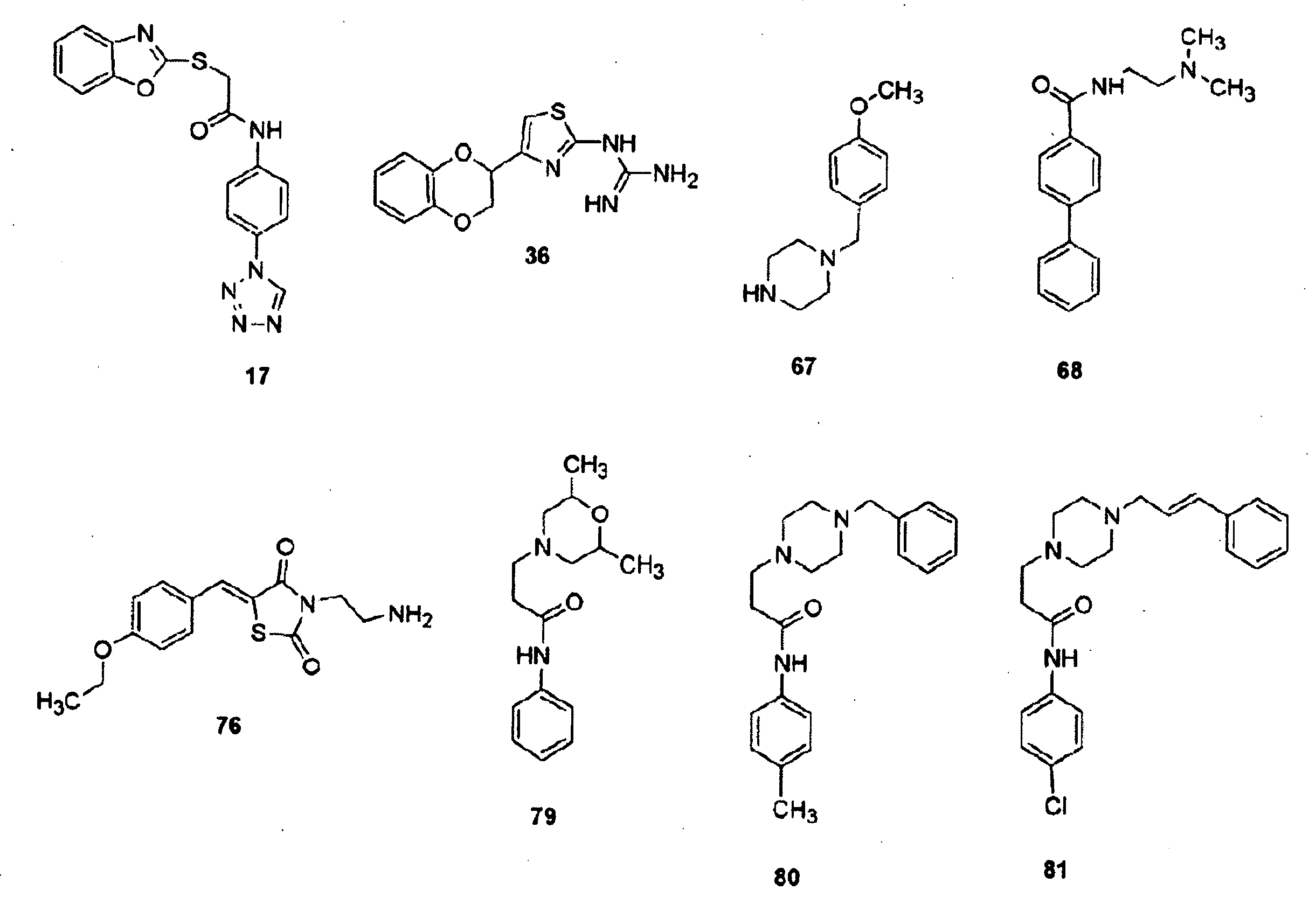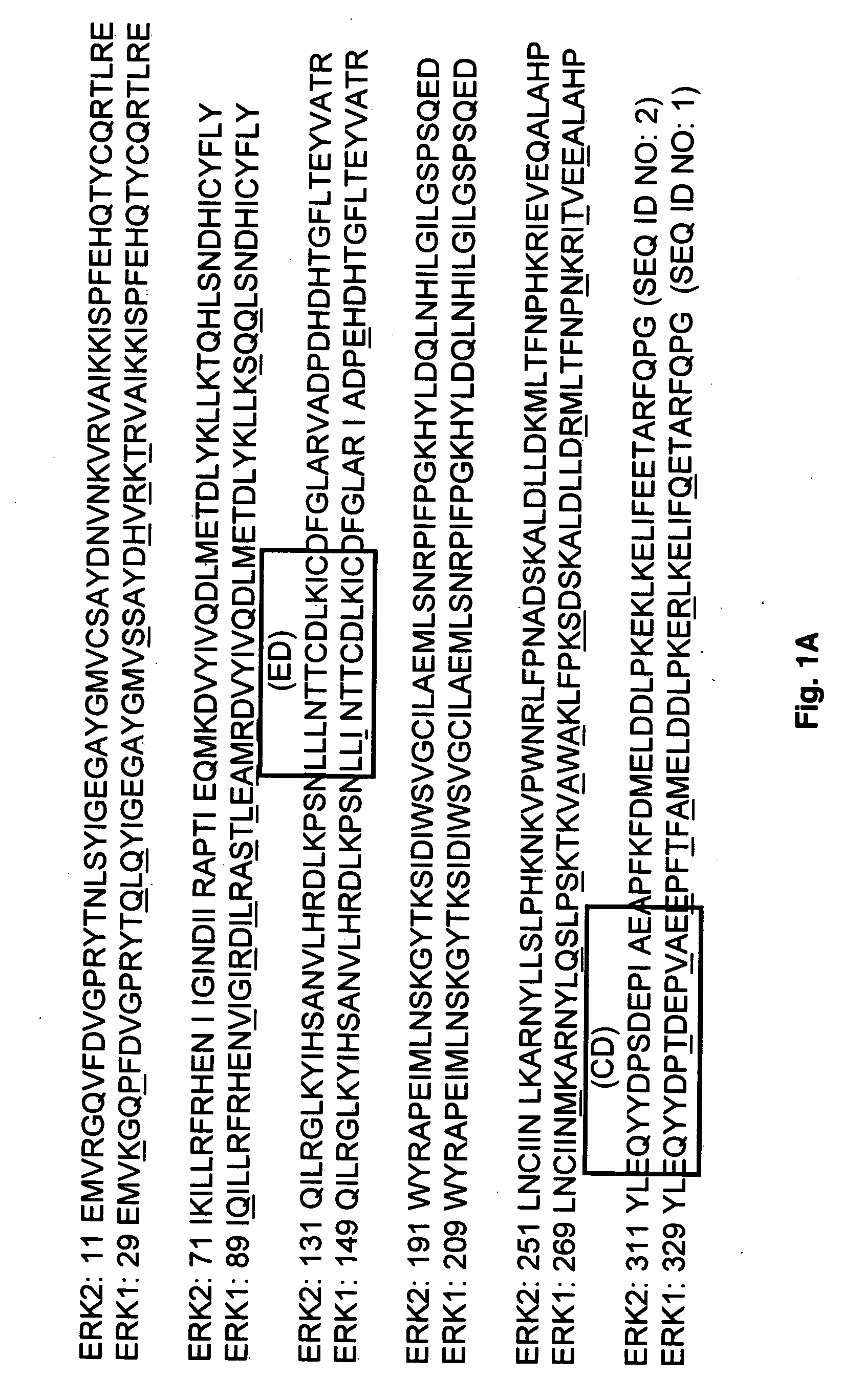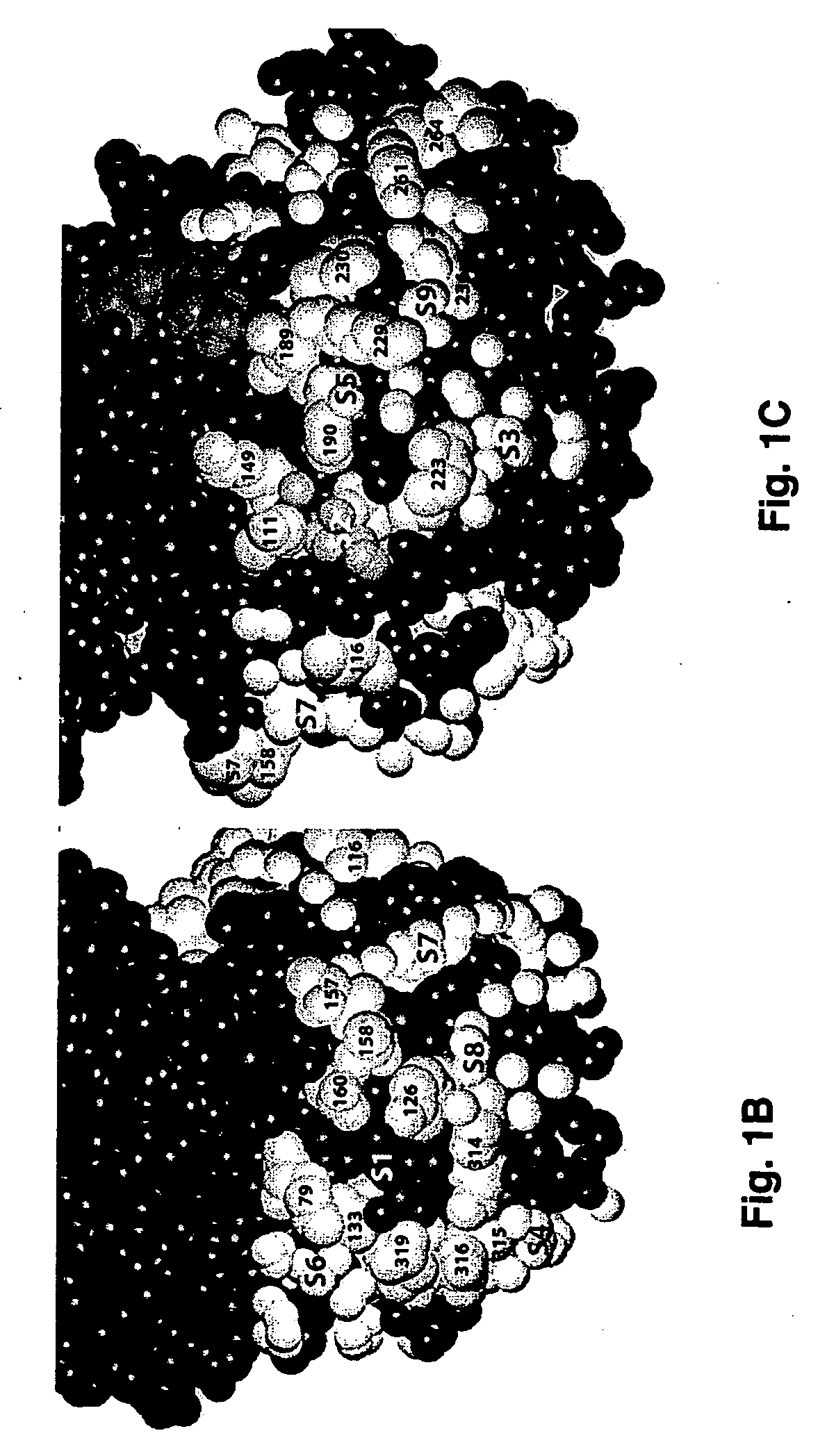Inhibitors for extracellular signal-regulated kinase docking domains and uses therefor
a signal-regulated kinase and docking domain technology, applied in the field of enzymes, computer-aided drug design and screening, can solve the problems of insufficient inhibitors of extracellular signal-regulated kinase docking domains, and no specific inhibitors of erk proteins are currently available, so as to prevent cell proliferation, arrest the proliferation of neoplastic cells, and reduce cell proliferation
- Summary
- Abstract
- Description
- Claims
- Application Information
AI Technical Summary
Benefits of technology
Problems solved by technology
Method used
Image
Examples
example 1
Cells and Reagents
[0103] HeLa (human cervical carcinoma), A549 (human lung carcinoma), HT1080 (human fibrosarcoma), or MDA-MB-468 (breast adenocarcinoma) cell lines were purchased from American Type Culture Collection (ATCC, Manassas, Va.). The estrogen receptor negative breast cancer cells, SUM-159, were obtained from the University of Michigan Human Breast Cancer Cell SUM-Lines. All cell lines were cultured in a complete medium consisting of Dulbecco's modified Eagle medium (DMEM) supplemented with 10% fetal bovine serum (FBS) and antibiotics (Penicillin, 100 U / ml; Streptomycin, 100 μg / ml) (Invitrogen, Carlsbad, Calif.). Epidermal growth factor (EGF) and phorbol 12-myristate 13-acetate (PMA) were purchased from Sigma (St. Louis, Mo.) and used at final concentrations of 25 ng / ml and 0.1 μM, respectively. Antibodies against phosphorylated Rsk-1 (pT573), Elk-1 (pS383), and ERK (pT183, pY185) were purchased from Cell Signaling Technologies (Woburn, Mass.), Santa Cruz Biotech. (Santa...
example 2
ERK2 Substrates and Putative Docking Domain Sites in Unphosphorylated ERK2
[0114]FIG. 1A shows the sequence alignment between ERK1 (SEQ ID NO: 1) and ERK2 (SEQ ID NO: 2) demonstrating 88.2% identity and the location of the CD and ED domains. FIGS. 1B-1C show the residues that have been identified as being involved in ERK2-substrate interactions (14,34). As shown, a large number of residues may be involved in substrate interactions and these residues are distributed over a large region of the C-terminal portion of the protein. To identify novel putative binding sites in the vicinity of the substrate-binding residues, the program SPHGEN was used to identify concave regions on the entire protein surface and fill them with virtual spheres. Clusters of these spheres are used to direct the placement of ligands during virtual database screening as in Examples 3 and 4. Of the identified clusters, those with 5 or more spheres and with one or more spheres within 5 Å of any of the substrate-b...
example 3
General CADD Method for Compound Screening Database Searching
[0117] The 3D structures of ERK2 in both the unphosphorylated and phosphorylated states (28,50) are available from the Protein DataBank (29). Charges and hydrogens are added to the proteins using SYBYL6.4 (Tripos, Inc.). All database searching calculations are carried out with DOCK 4.0.1, that includes in-house modifications, using flexible ligands based on the anchored search method (31). Ligand-protein interaction energies are approximated by the sum of the electrostatic and van der Waals (vdW, steric) components as calculated by the GRID method (35,55) implemented in DOCK using default values. In the GRID model a 3D lattice of hypothetical points is overlaid on the protein and the electrostatic and vdW potential due to the protein at each point is calculated. Interaction energies of ligands are then calculated based on the potential grid, rather than directly with the protein, yielding a significant saving in computer...
PUM
| Property | Measurement | Unit |
|---|---|---|
| molecular weight distributions | aaaaa | aaaaa |
| molecular weight distributions | aaaaa | aaaaa |
| concentrations | aaaaa | aaaaa |
Abstract
Description
Claims
Application Information
 Login to View More
Login to View More - R&D
- Intellectual Property
- Life Sciences
- Materials
- Tech Scout
- Unparalleled Data Quality
- Higher Quality Content
- 60% Fewer Hallucinations
Browse by: Latest US Patents, China's latest patents, Technical Efficacy Thesaurus, Application Domain, Technology Topic, Popular Technical Reports.
© 2025 PatSnap. All rights reserved.Legal|Privacy policy|Modern Slavery Act Transparency Statement|Sitemap|About US| Contact US: help@patsnap.com



